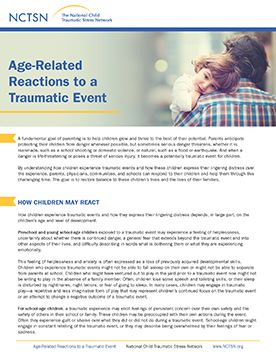
Age-Related Reactions to a Traumatic Event
Describes how young children, school-age children, and adolescents react to traumatic events and offers suggestions on how parents and caregivers can help and support them.
May was first declared as Mental Health Awareness Month in 1949. In 2006, Children’s Mental Health Awareness Day was chosen as a special day during this month to focus on the mental health needs of children. Since 2006, May has been a time to acknowledge the importance of children's mental health, show that positive mental health is essential to a child's healthy development from birth, promote positive youth development, resiliency, and recovery, along with the transformation of mental health service delivery for youth, adolescents, and their families.
The National Child Traumatic Stress Network (NCTSN) has compiled a list of helpful resources for parents and caregivers, children, mental health providers, child welfare and juvenile justice professionals, healthcare providers, educators and school staff, military families, and policy makers.
A list of external resources related to children's mental health awareness is available here.

Describes how young children, school-age children, and adolescents react to traumatic events and offers suggestions on how parents and caregivers can help and support them.
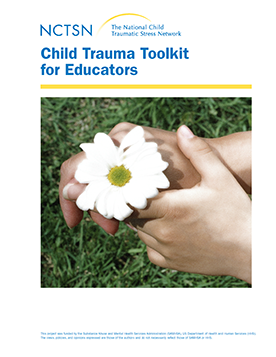
Provides school administrators, teachers, staff, and concerned parents with basic information about working with traumatized children in the school system.
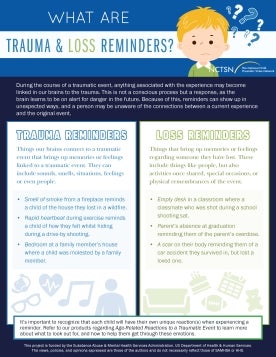
Explains how everyday sights, sounds, and experiences can unexpectedly trigger memories or emotions tied to trauma or loss. Helps caregivers understand these reminders and recognize how they may show up differently for each child.
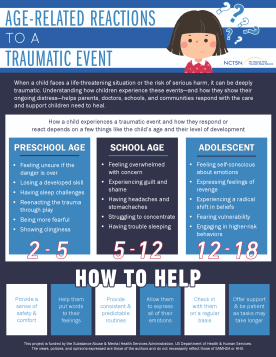
Explains how children of different ages may react to traumatic events and offers simple strategies for parents, caregivers, and communities to provide support and promote healing.
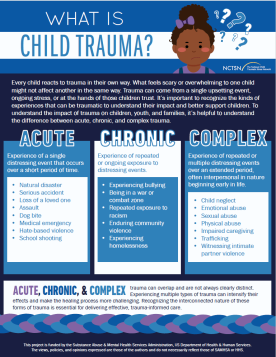
Discusses the differences between acute, chronic, and complex trauma and how each trauma type uniquely affects children. Emphasizes the importance of recognizing their overlap to provide effective trauma-informed care.
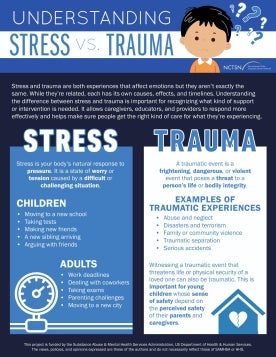
Highlights the differences between stress and trauma by explaining their unique causes, effects, and timelines, helping caregivers, educators, and providers respond with the appropriate support.
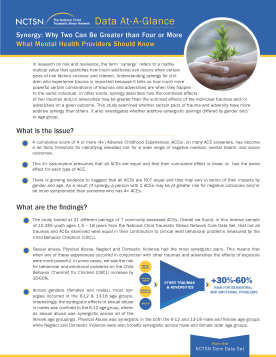
Offers providers information about synergy for children who experience trauma. This fact sheet is a summary of important points from a NCTSN Core Data Set publication developed to help providers understand whether certain pairs of trauma and adversity have more additive synergy than others.
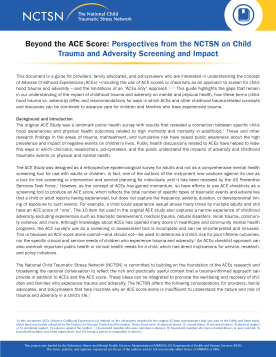
Provides an overview of the concepts of Adverse Childhood Experiences (ACEs) and childhood trauma, highlights the gaps that remain in our understanding of the impact of childhood trauma and adversity on mental and physical health...
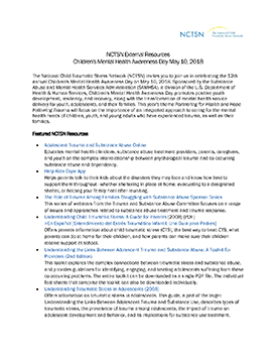
Provides external resources related to Children's Mental Health Awareness.
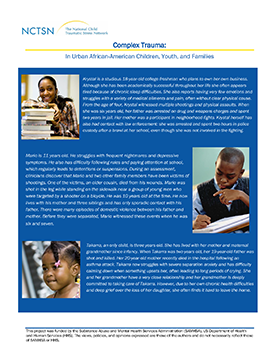
Discusses how families living in racially and economically segregated communities must also cope with the effects of historical trauma and intergenerational racism.
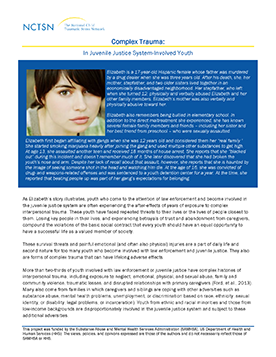
Delineates the path from complex trauma exposure to involvement in the juvenile justice system.
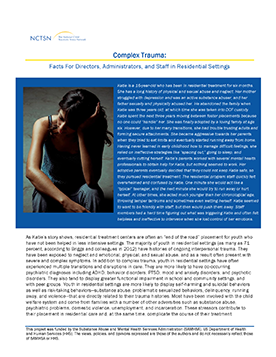
Provides information for staff in residential treatment centers on how to understand behavior through a trauma lens.